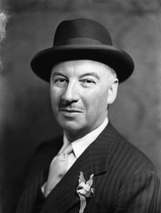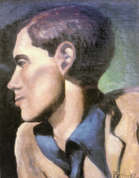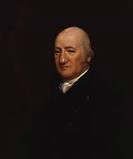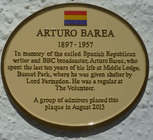Notable People in Faringdon's History
Gerald Hugh Tyrwhitt-Wilson 14th Baron Berners 1883-1950is more commonly referred to as Lord Berners. We have his dry surreal sense of humour to thank for the Folly on Folly Hill: he had the Tower built to tease the neighbours!
Berners was in all senses of the word the Gay Lord: generous, talented, amusing, hospitable and generally one of the most fascinating and idiosyncratic personalities of his time. He was also an accomplished writer, painter and composer. Berners made Faringdon House the centre of a glittering social circle, entertaining some of the most diverse, creative and influential people during the 1920s and 30s. More information and pictures |
|
Robert Vernon Heber-Percy 5th November 1911 – 29th October 1987
In 1931 at the age of 20, Robert Heber-Percy became Lord Berners’ companion. Robert’s high spirits and uninhibited behaviour were “enchanting” to Lord Berners and also an important element in the entertainment of the glitterati that partied at Faringdon House during the 1930s. Robert Heber-Percy inherited Faringdon Estates from Lord Berners in 1950. He lived at Faringdon House until he died. He took an active interest in Faringdon. He gave the Folly Tower and Woodland to Faringdon. Video: Country Life in the Vale 1984 Fast forward to minute 11.24 to hear Robert talking about dyeing the pigeons to cheer up Lord Berners. Robert Heber Percy speaking about dyeing the pigeons 1984
|
|
Sir Robert Pye ( 1585 - 1662 ) & descendants. Owner of Faringdon House, Member of Parliament
The Unton Family, Wadley from 1440 William and Daniel Bennett Owners of Faringdon House (1760- 1919) Arturo Barea 1897-1957(pdf) Basque writer and broadcaster Russell Spinage Youth Club leader 1949 to1963 Nancy Reeves, Girl Guides and Ferndale School Lord Faringdon 1st, 2nd and 3rd Lord Faringdon John Gordon Crowdy Founder of Crowdy & Rose solicitors Robert Tucker established his garden nursery business just off the Stanford Road in 1849 After World War II, when the ‘Recreation Ground’ on Park Road, once situated between the dairy/sawmill and the Hobwell footpath had become swallowed up by railway storage or timber yards, land on the opposite side of the road was given to the town by Walter Tucker (1876-1960) to create Tucker Park. The new recreation ground (photo) also became the home for Faringdon Town Football Club. |



